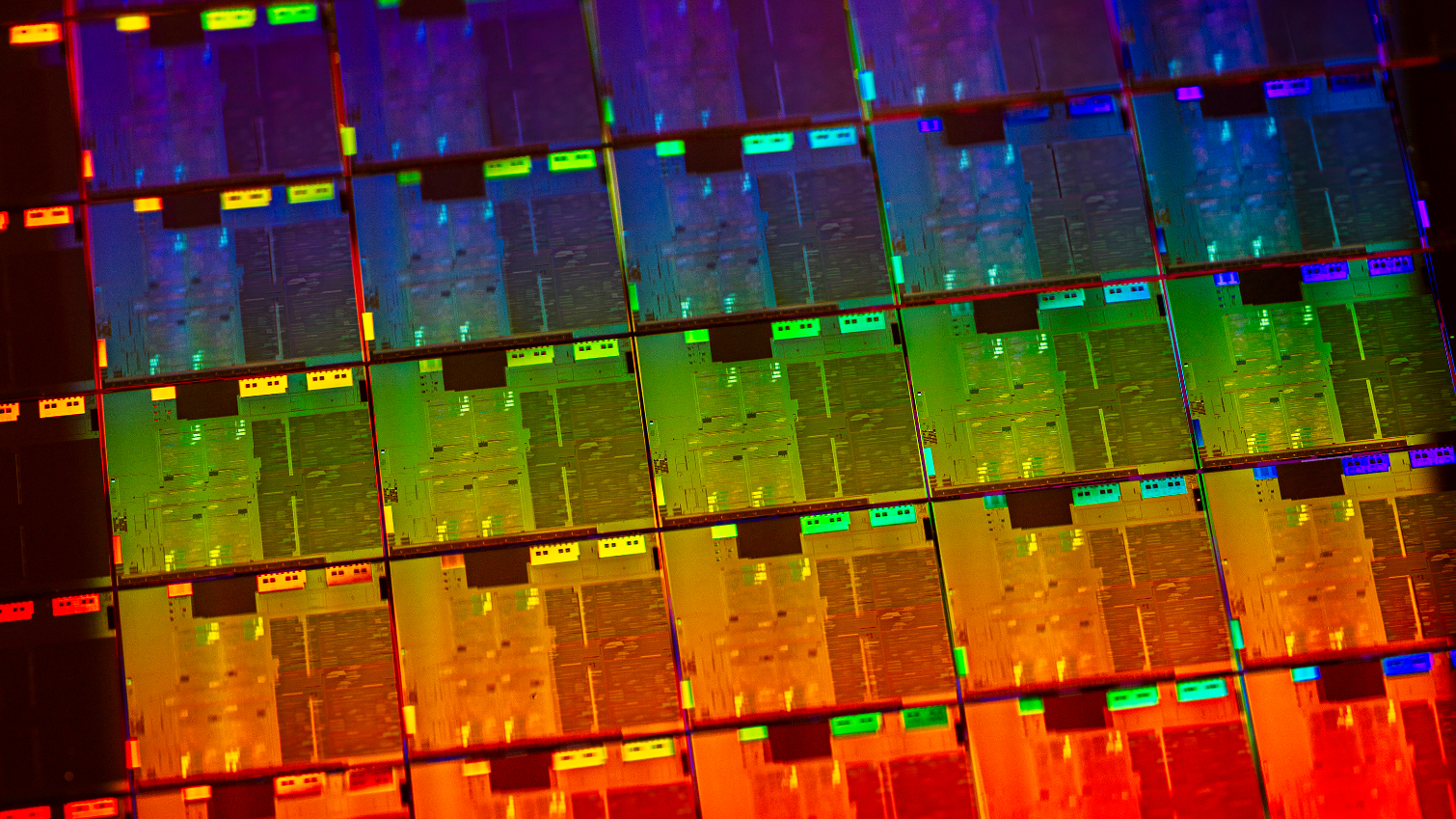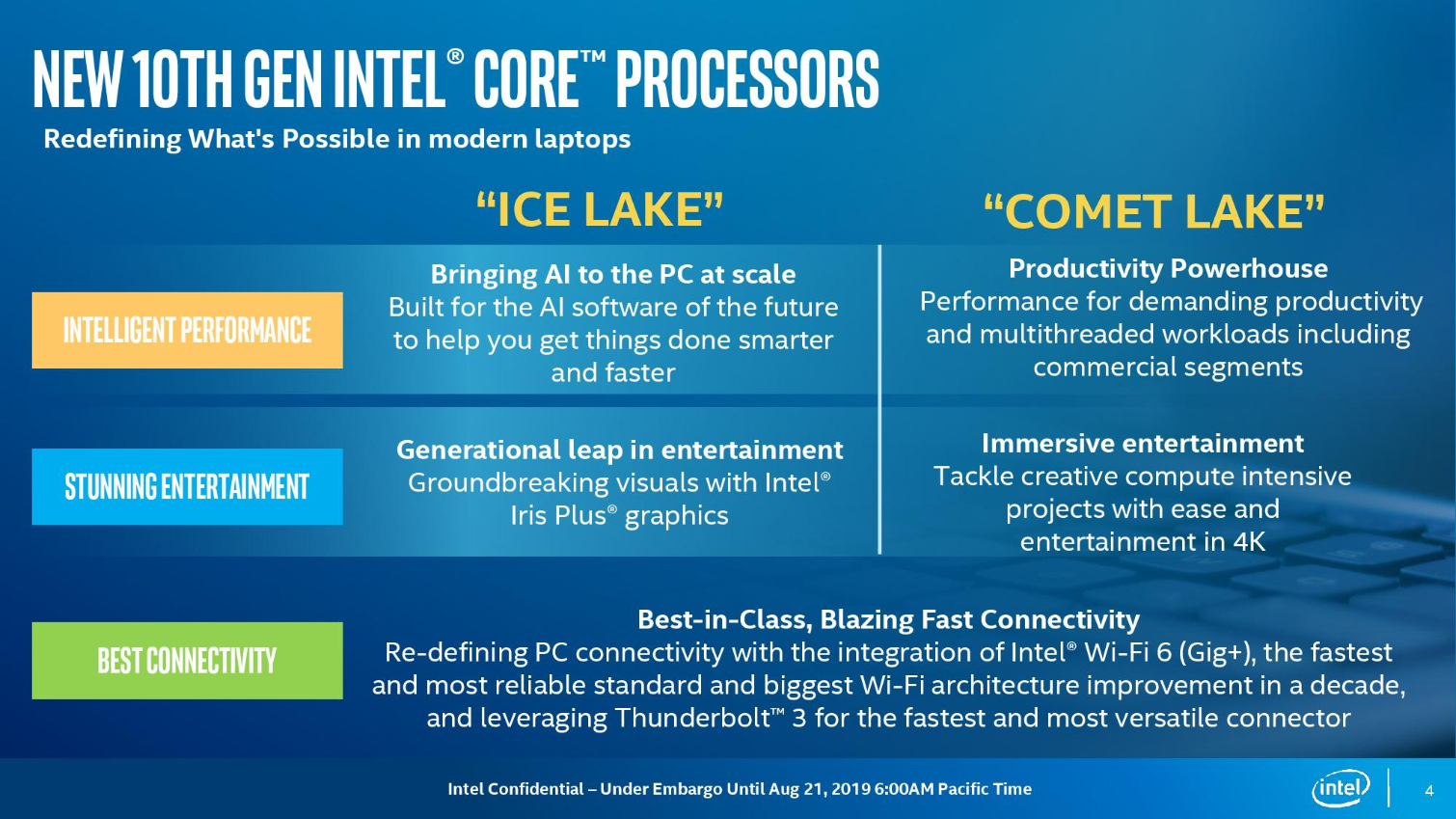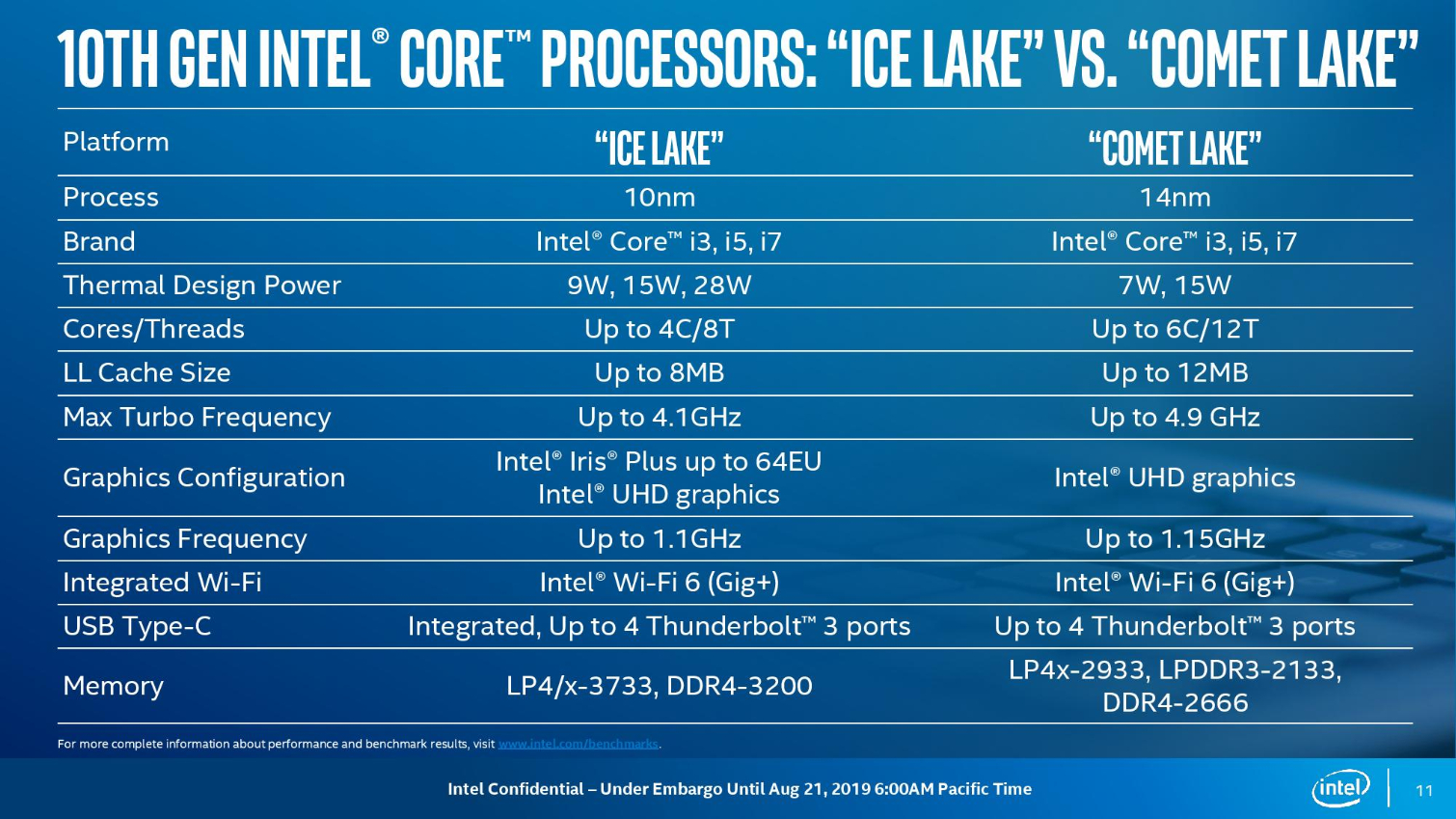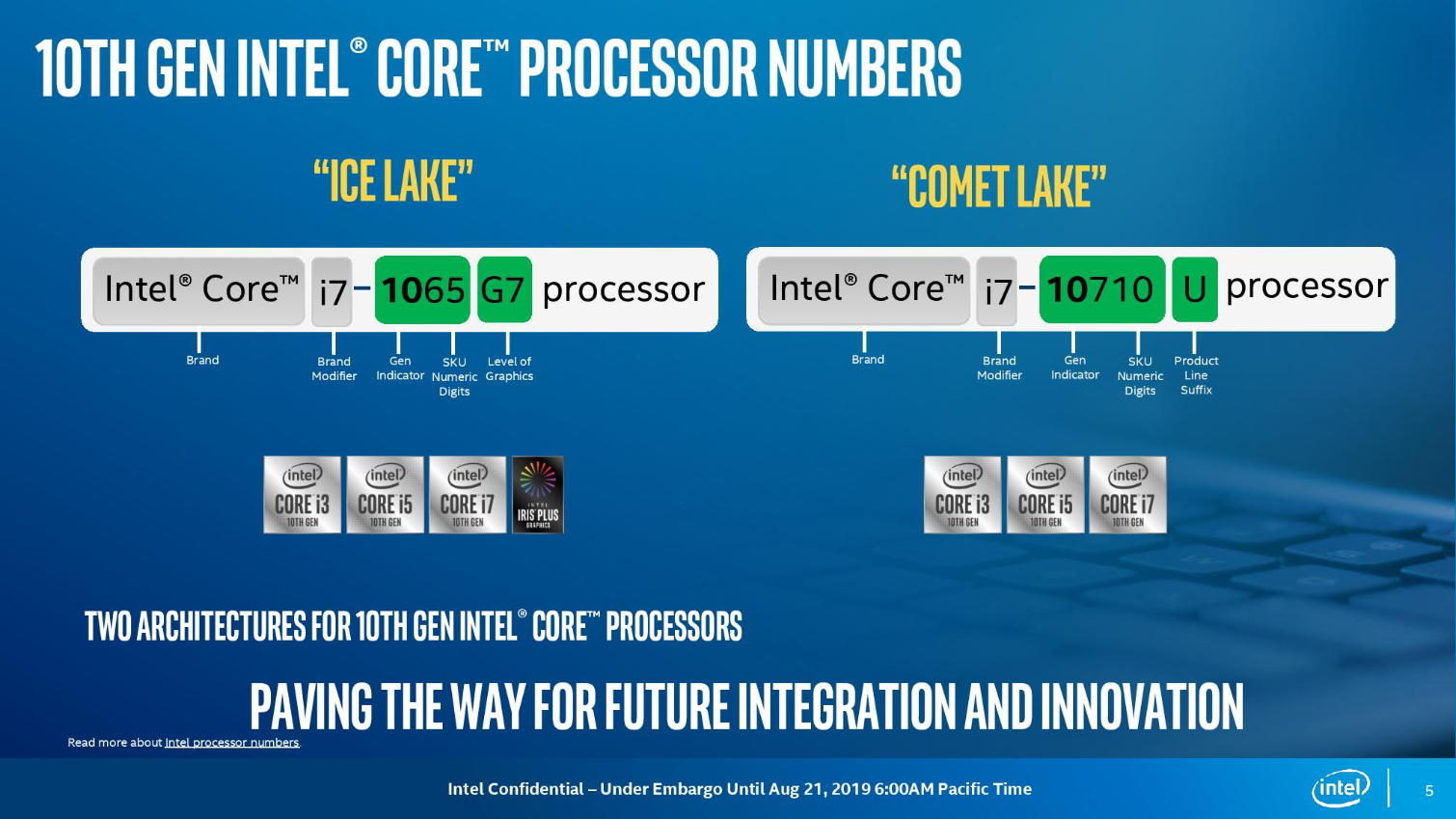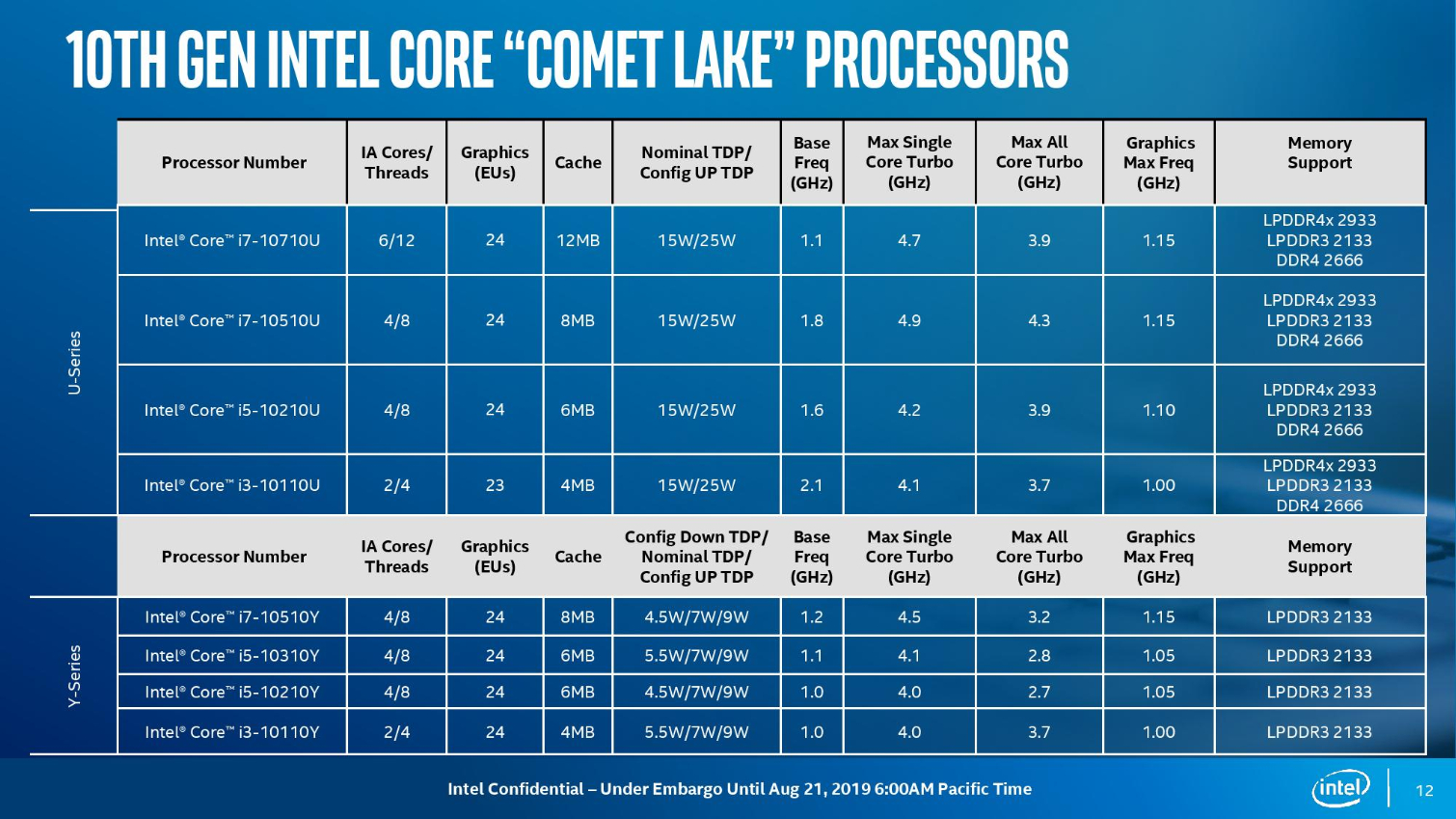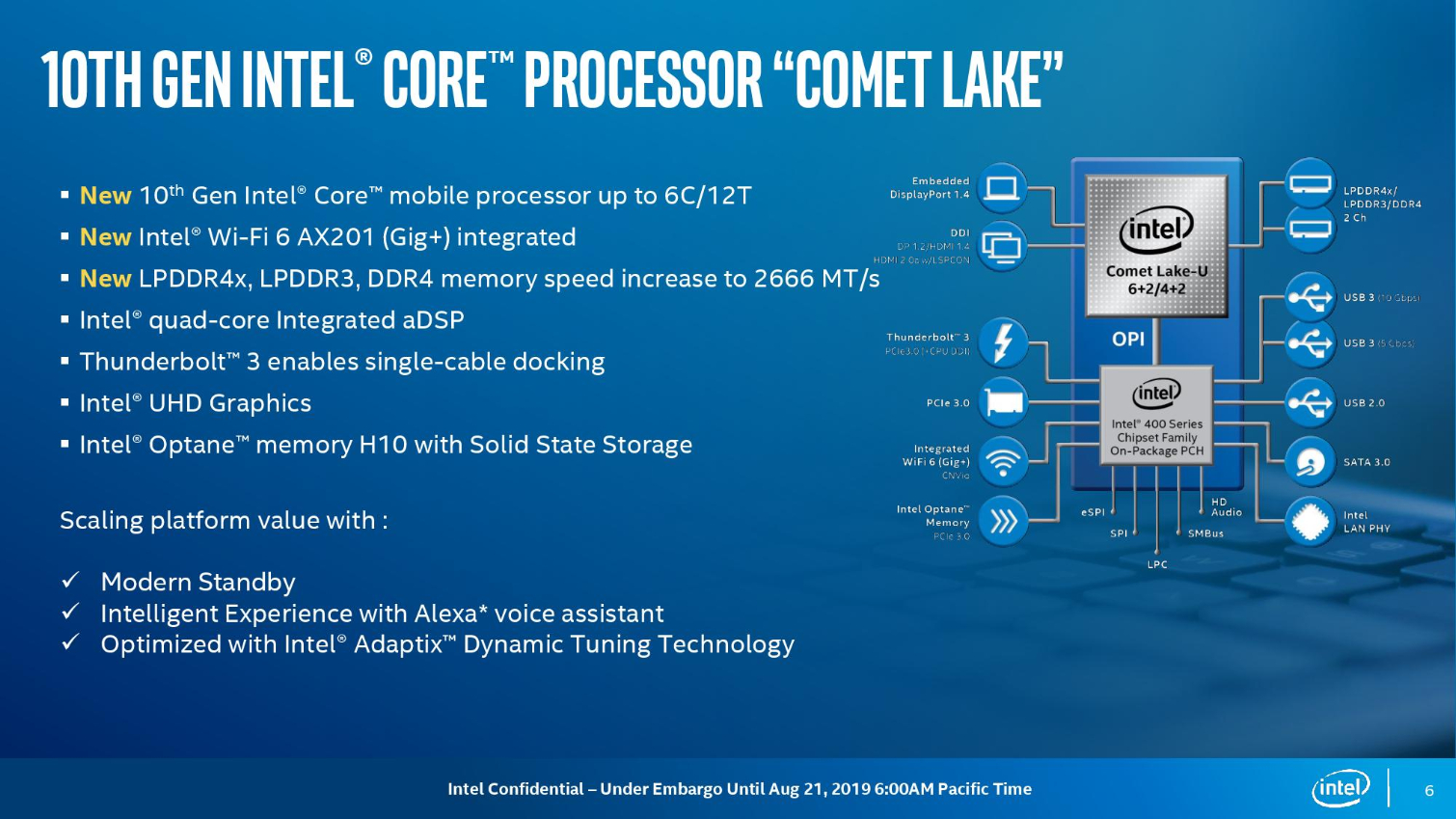Intel Unveils Comet Lake Processors, 14nm Chips Join 10nm in 10th-Gen Lineup
Intel announced eight new Comet Lake processors for the mobile market. These new processors come in U- and Y-Series models for laptops and 2-in-1 designs and slot into the 10th Generation Core series, bumping up the U-series from four to six cores and the Y-series from two cores to four. The U-series models also add support for LPDDR4X. We also have coverage of the new Dell XPS 13 models and MSI's content creation laptops, so head there for a look at the newest laptops with Comet Lake chips.
Unlike the 10nm Ice Lake chips the Intel began shipping earlier this month, the eight new models come wielding the 14nm process. That creates a confusing mismatch in the company's 10th-Gen series, as the 10nm Ice Lake models come with a newer manufacturing process, architecture, and beefed up Gen11 graphics, while the 14nm Comet Lake chips come with the aging Skylake architecture and Gen 9.5 graphics. And they're all lumped under the 10th-Generation branding.
The approach of mixing processes and microarchitectures under a single "Gen" family isn't entirely new for Intel. The company began the practice with its 9th-Gen chips as it dealt with the fallout of its oft-delayed 10nm process, and has likely decided to continue shipping 14nm processors to assure enough supply of new laptop chips as it continues to ramp up 10nm production.
The tactic is beyond confusing to casual users: Most mainstream users aren't aware of the finer-grained details of processor technology, so without a very clear product naming convention it would be easy to end up with 10th-Gen processors that don't come with the expected amount of performance. Intel has revamped its naming scheme, which we'll cover shortly, but it hardly helps.
Intel's rationale is that the Ice Lake processors are better suited for light use-cases, like gaming, web browsing and office use, while the Comet Lake processors are better suited for productivity workloads that typically need more threaded horsepower, like multi-tasking and video/photo editing. Comet Lake's higher core counts deliver more performance in those types of workloads.
The Ice Lake chips have a more efficient microarchitecture and 10nm process, so laptops with the chips will have better battery life. Ice Lake chips also have radically improved Gen11 graphics that offer nearly twice the performance of the older Gen 9.5 graphics found in Comet Lake. Gamers should definitely opt for Ice Lake models.
Intel divides the chips into the standard Core i3, i5, and i7 segments, but while the Ice Lake processors top out at four cores and eight threads, the Comet Lake chips stretch up to six cores and 12 threads. Comet Lake processors also come with higher peak boost frequencies that range up to 4.9 GHz, while Ice Lake tops out at 4.1 GHz. That, again, is going to lead to confusion, as the improved Ice Lake architecture is faster in lightly-threaded work despite its lower clock frequencies. In a similar vein, the Comet Lake processors have up to 12MB of L3 cache, but that comes as a byproduct of the higher core counts and doesn't equate to faster performance than the Ice Lake models.
Get Tom's Hardware's best news and in-depth reviews, straight to your inbox.
In a bid to "simplify" the difference between the two types of processors, Intel points to the "G7" branding (which could also be G4) that denotes the level of Gen11 graphics, as the primary identifier for Ice Lake chips. That makes sense, as the Comet Lake chips don't come with Gen11 graphics and therefore do not have the "Gx" identifier, but that hardly helps the average consumer.
Conversely, Comet Lake with have a "U" or "Y" identifier at the end of its product string, whereas Ice Lake models will not. In other words, Intel is using its confusing change of product identifiers with the Ice Lake chips (here is a deeper look at what this mismash of numbers means) to help customers identify the difference between the chips.
Intel split up the Comet Lake series into U-Series Core i5 models with 15 and 25W TDPs, and Y-Series Core i7 models with 4.5, 7, and 9W TDPs. OEMs can use Intel's cTDP (configurable TDP) feature to tailor the chips for either higher or lower performance envelopes with the option of a cTDP increase to 25W for U-series parts. Y-series chips can move up to 9W, or down to 4.5/5.5W. Unfortunately, as per Intel's standard policy, OEMs don't have to disclose which cTDP values they use in laptops, so performance among the stack can be a moving and unclear target.
In yet another round of confusion, the Core i7 chips support faster LPDDR4X-2933 and DDR4-2666 memory than the previous-gen models, while the Core i5 models only support LPDDR3-2133. Support for LPDDR4X comes as the byproduct of a new memory controller on the U-series chips, meaning the company has spun a new die for the chips. This addition also bumps maximum memory support up from 16GB in a dual-channel configuration to 32GB and results in lower power consumption with 'like' memory capacities.
Both the Ice Lake and Comet Lake processors support Thunderbolt 3 and Wi-Fi 6 connectivity, with the latter coming to the Comet Lake series through targeted enhancements to the platform controller hub (PCH). A Wi-Fi 6 MAC is integrated on the chipset, but it still requires a PHY for operation, thus reducing costs and avoiding additional FCC requirements for the chipset. Intel offers its own CNVi module as the other half of the integrated solution. This combination provides up to gigabit speeds wirelessly to increase performance for applications that are sensitive to network latency, like gaming, and enable advanced traffic management features.
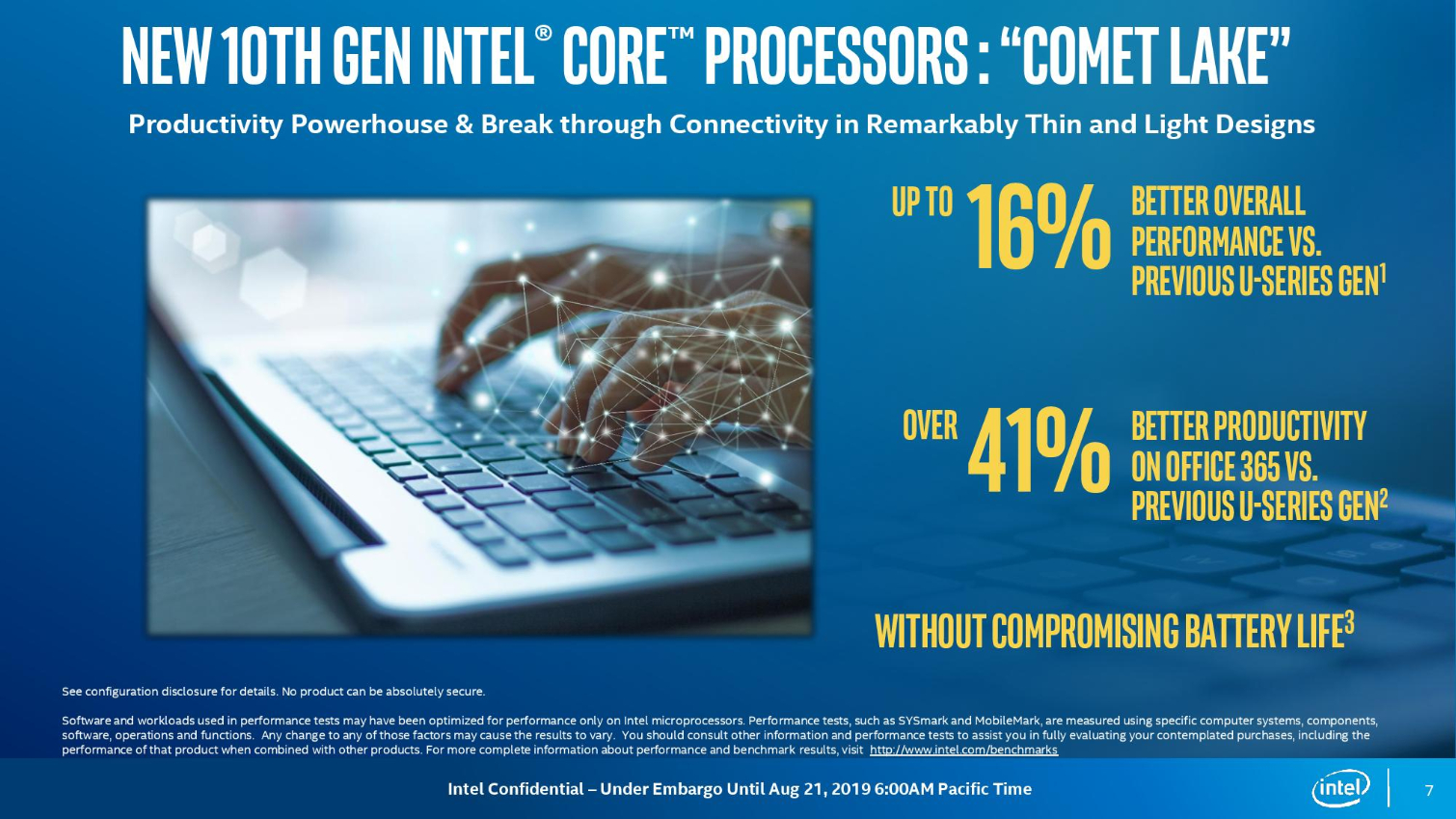

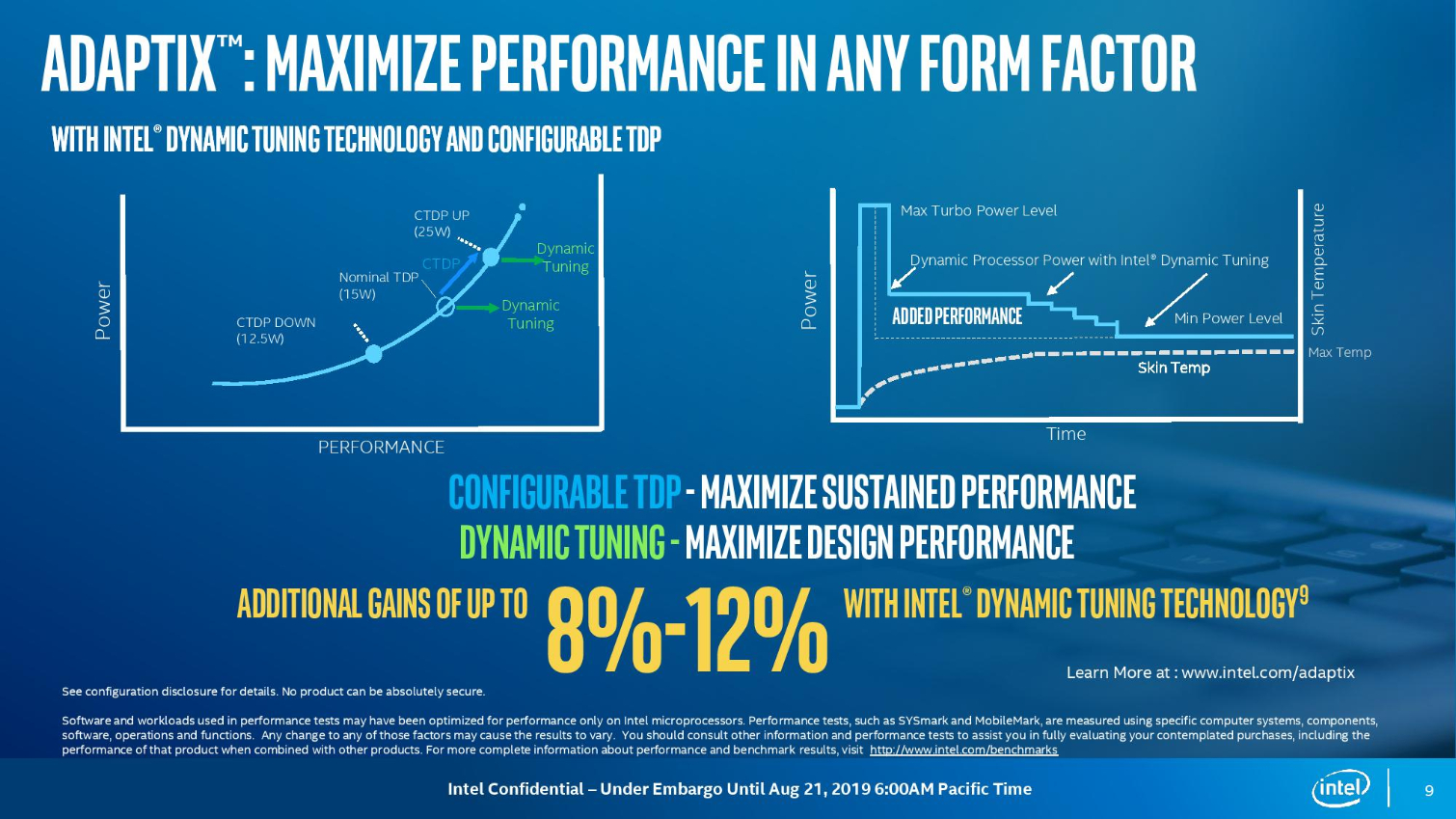
Comet Lake processors do deliver more performance than previous-generation models due to higher clock speeds and enhanced in-silicon security mitigations for the recent wave of security vulnerabilities. Intel shared some of its performance projections for the new processors, with claims of up to 16% more overall performance and 41% better productivity compared to the previous-gen U-series chips. The company also shared data that shows even more explosive gains compared to a five-year-old laptop, which is the typical amount of time consumers use a laptop before splurging for a new model.
Intel also says that "some" 10th-Gen models will come with Dynamic Tuning Technology that uses pre-trained AI algorithms to predictively adapt based on usage patterns, but that is a feature of the Ice Lake processors, so Comet Lake users will not get the feature.
Intel says that more than 90 new laptop designs with the Comet Lake processors will hit shelves at retailers by the holidays.

Paul Alcorn is the Editor-in-Chief for Tom's Hardware US. He also writes news and reviews on CPUs, storage, and enterprise hardware.
-
thegriff Intel is really screwing up, now you can't even tell which is the latest process. These comet lakes aren't really any different arch. or node. They have the 10nm process working so produce them for 10 series and leave 9 series for the old gen./arch. and stop ticking people off.Reply -
bit_user ReplyIntel also says that "some" 10th-Gen models will come with Dynamic Tuning Technology that uses pre-trained AI algorithms to predictively adapt based on usage patterns, but that is a feature of the Ice Lake processors, so Comet Lake users will not get the feature.
This sounds like another ripe target for side-channel exploits. -
Groveling_Wyrm Replymaestro0428 said:This is stupidly confusing for the average consumer.
The average "Consumer" can't tell you what processor or motherboard they currently have. Asking them to identify the next generations isn't going to confuse them any worse. They only thing most of them will see or hear are keywords like "Intel 10th Generation" or "The newest Intel....".
Its mostly technocrats such as ourselves, that actually care to identify them, that will be confused.
The biggest people that Intel is trying to impress are the stockholders. And with any stockholder, you either dazzle them with Intelligence, or Baffle them with BS. We will soon see what Intel is pushing...
As long as they keep pushing out new processors, and making sale goals, Intel has a lot of free reign to do what they want. -
redgarl It just proves that 10nm is in an even worst state as we thought. Intel cannot even supply their chips to OEMs due to yield. They mislead investors by stating that 10nm was not canceled... they released a couple of 4 cores chips just to denied digitime article, however, as of now the article is way more credible than Intel actions.Reply
https://www.extremetech.com/computing/279306-intel-denies-media-reports-claiming-it-cancelled-its-10nm-process -
gggplaya To be fair, AMD does the same thing with their APU's. They continue to call them 3000 series, even though they're still on 12nm.Reply -
InvalidError Reply
Intel makes more than just PC CPUs. I bet Intel/Altera Agilex FPGAs make up a significant chunk of Intel's 10nm manufacturing as those have far larger profit margins than consumer parts. Intel's Xe is also supposed to be on 10nm.redgarl said:They mislead investors by stating that 10nm was not canceled... they released a couple of 4 cores chips just to denied digitime article, however, as of now the article is way more credible than Intel actions.
Makes sense that a process that is so late to market with limited fab capacity (don't remember reading anything about Intel planning to expand 10nm beyond the fabs it developed it at) would be used exclusively for higher margin parts. What wouldn't make sense is scaling up a 10nm DUV process when 7nm EUV is much simpler and likely cheaper. -
TJ Hooker Reply
But it's not cancelled...redgarl said:It just proves that 10nm is in an even worst state as we thought. Intel cannot even supply their chips to OEMs due to yield. They mislead investors by stating that 10nm was not canceled... they released a couple of 4 cores chips just to denied digitime article, however, as of now the article is way more credible than Intel actions.
https://www.extremetech.com/computing/279306-intel-denies-media-reports-claiming-it-cancelled-its-10nm-process
I don't know what digitimes article you're referring to, but are you claiming that Intel released 10nm CPUs just to prove an article wrong? Really? And you do realize that if Intel had knowingly mislead investors with their statements on 10nm, that would be illegal and grounds for a lawsuit, right?
